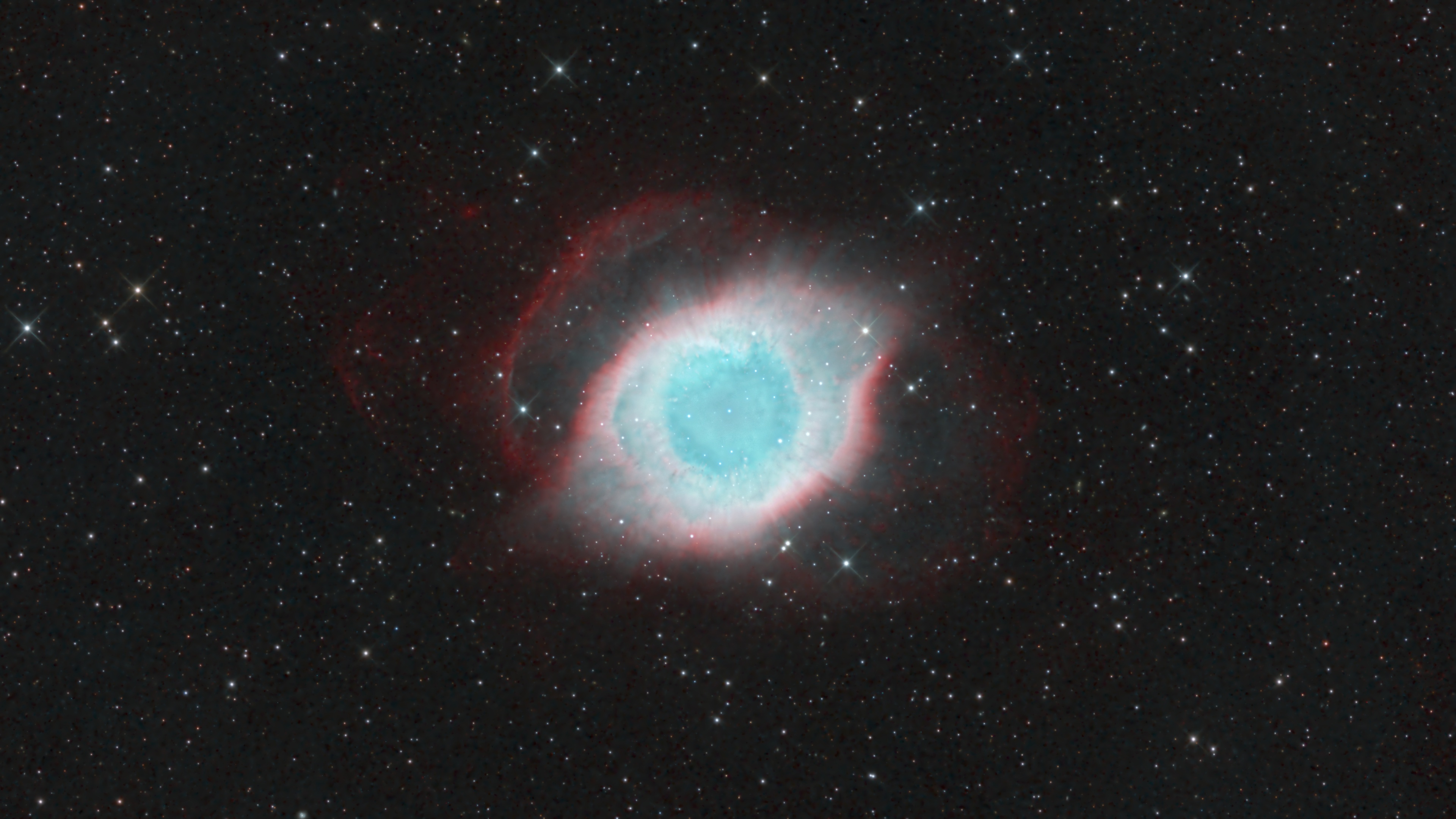NGC 7293 - Helix Nebula
The Helix Nebula is one of the largest planetary nebula in the sky – at least from its appearance. This is, because it is also one of the closest objects of this type. The physical dimension of the nebula are quite typically for a planetary nebula: the bright torus is less than 3 light-years in diameter, the outer-most shell is about 5 light-years in diameter. Due to its low distance of about 655 light-years, NGC 7293 is one of the most investigated nebula in the sky.
The nebula appears to be shaped as a spheroid but its real structure may be more complicated. There is new evidence that it may consist of two gaseous disks nearly perpendicular to each other.
The central star of NGC 7293 is a white dwarf, remnant of a sun-like star that has expelled its outer layers forming the shells of the nebula. Radiation from the dying star in the centre ionizes the ejected gas that glows in different well-defined colours when the ions re-capture electrons: The turquoise central disk mainly glows in the light of OIII, whereas the radiation of the bright inner-most shell is dominated by Hα-light. The inner region of the nebula is covered by small “cometary” knots, best visible in the light of the Hα spectral line. An OIII filter reveals strange “hairy” axial structures in the inner-most shell. The weak outer shells glow mainly in Hα with contributions of OIII.





